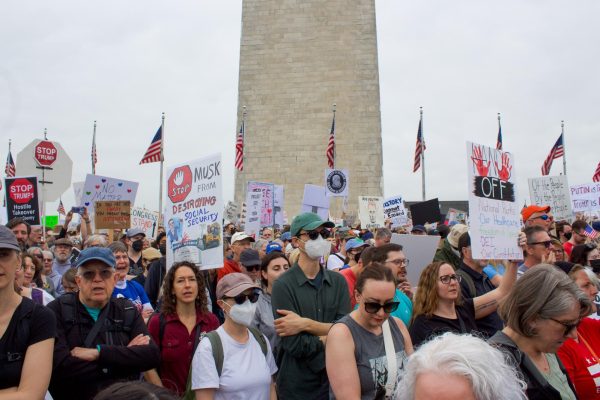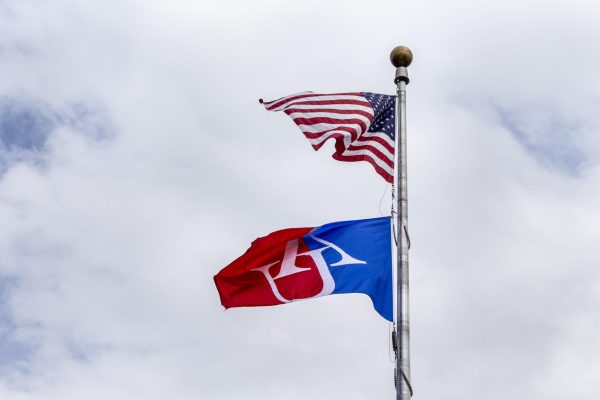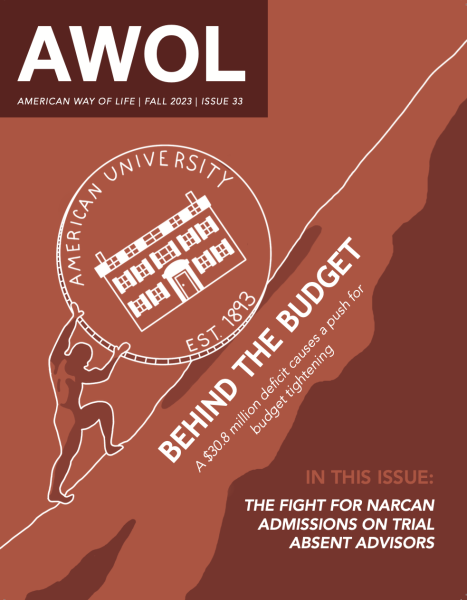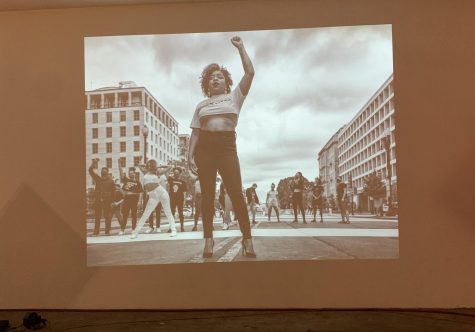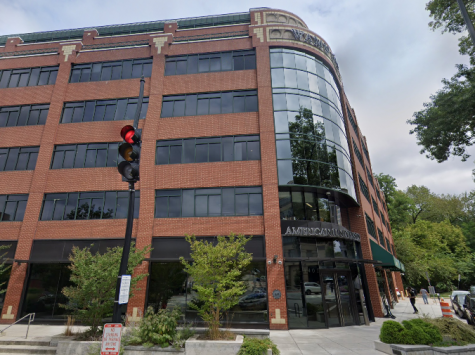Protesters remember the 103rd anniversary of the Armenian Genocide
Several Hundred Armenians protested the Turkish Ambassador’s residence on the 103rd anniversary of the Armenian Genocide.

Hundreds of Turks and Armenians gathered at Sheridan Circle in Northwest Washington on Tuesday to protest for what each side says is “the truth” about the Armenian Genocide. Both sides convinced that the opposing camp are liars, stood in the pouring spring rain holding signs and blasting ethnic music from Bose sound systems. Armenians chanted through megaphones “Turkey supports ISIS,” the Turks turned on sirens to mute the chants from across the road.
The protest, which happened in front of the Turkish Ambassador’s residence, was held on the 103rd anniversary of what many refer to as the Armenian Genocide. The Armenian Genocide is an ethnic cleansing at the tail end of the first World War in which the Ottoman Empire rounded up the Christian Armenian minority, lead them out of their homes, and marched them into the desert where they were executed, according to The New York Times.
The annual protest this week is a result of the Turkish government’s denial that the genocide ever happened. Voices on the Turkish side of the protest varied from outright denial to accusing Armenians of being terrorists during the war, and therefore it was not a genocide. Instead, Turkish protesters said that the Armenians were just casualties of war.
“In 1912 between the Ottoman Empire and Armenia there was a treaty for a population exchange,” Firatcan Filiz, a concerned Turkish American taking part in the pro-Turkey protest, said. “The Armenian people on the borderlands of the Ottoman empire were going to Armenia, and Turkish people in Armenia were going to come to Turkey.”
Filiz said that the peaceful population exchange was hijacked by the Armenians who began burning down houses, which lead to retaliation by Turks.
“In 1913 when the Turkish people living in Armenia were coming back to the Ottoman Empire because Armenia established its independence, Armenian people first killed over one million Turkish people,” Filiz said. “People heard about this [in Turkey] when the news got back. When Armenian people started fleeing Turkey in 1915, they started to burn houses and everything. As a reaction to that [violence], Turkish people started to kill Armenians. That’s what they [Armenians] call today genocide.”
There are no articles or scholarly research to back Filiz’s claims, but many pro-Turkey protesters, such as Salih Celik, held similar views.
Celik, the education attaché at the Turkish Embassy said that history should remain in the past and that the country’s founder Mustafa Kemal Atatürk, whose statue stands in front of the ambassador’s residence, would have looked to the future. Even though Celik said that both parties should look to the future, he denied that there was ever a genocide.
“It didn’t happen, they are saying that, but there was no genocide,” Celik said.
A similar protest happened last May when President Trump welcomed Turkish President Erdogan to Washington and commended him on his country’s efforts to fight terrorism in the region, according to the New York Times.
At that protest last year, protesters, many of them Armenian, were attacked outside the Turkish Ambassador’s Residence by Turkish security forces, injuring 11.
This lead to a substantial police presence consisting of five different police departments including the Secret Service, The Diplomatic Security Service, The Metropolitan Police, and the United States Park Police at the event on Tuesday.
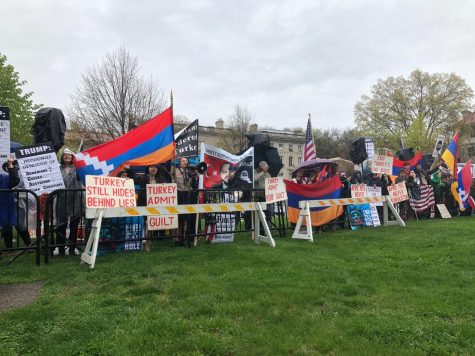
Although the increased police presence managed to keep the peace, Elizabeth Chouldjian, the Communications Director for the Armenian National Committee, felt that the Armenian protesters were unfairly treated compared to the pro-Turkish demonstrators.
“There is an inequity here,” Chouldjian said. “Last year the Turkish government attacked peaceful protesters, and if you look at how this [protest] is set up, they’re allowed to stay on their side of the protest with no bars. We [Armenians] are forced to stay behind this statue all the way on the other side of the circle. The Turkish government attacked peaceful protesters, and now it’s the peaceful protesters who are paying the price for that attack without first amendment rights being curtailed. It seems like a double standard here.”
The couple hundred Armenian demonstrators were barricaded on the far half of Sheridan Circle opposite of the Turkish Ambassador’s Residence.
The 50 or so Turkish protesters were allowed to protest on the sidewalk of the Turkish Ambassador’s Residence facing Sheridan Circle without any barricades; rush hour traffic was the only obstacle keeping the Turkish protest contained.
The barricades did not stop Armenian protesters from peacefully walking laps around the circle, responding to the Turkish protests.
One of them was American University freshman Nanar Keurkunian, a member of the local chapter of Homenetmen (Armenian) Scouts, an organization that participates in community service and teaches young Armenians about their history.
Keurkunian has been in Armenian Scouts for 14 years and is a member of the Armenian Student Association at AU, a group that helps connect college age Armenians with others in the District.
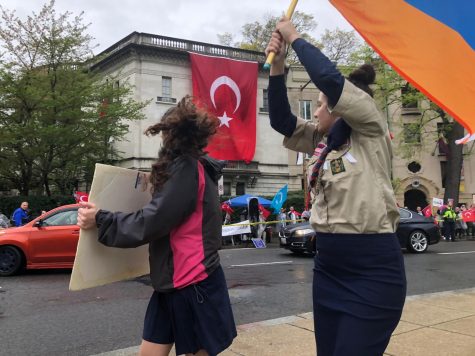
“I was annoyed by how far away we were from the Turkish protesters, I wanted the Turks to feel my anger,” Keurkunian said. “I like to think as a scout in my uniform, looking into every one of their eyes while waving my Armenian flag, telling them that they failed and showing them that I’m not afraid, is the main reason I go to these protests.”
A list of 28 countries, which excludes the United States, recognizes the Armenian Genocide, but the protest was more than just about recognition, Chouldjian said.
“We have a dual purpose this year. We are here to commemorate the Armenian Genocide and to demand justice, but also to stand up for our first amendment right,” Chouldjian said.
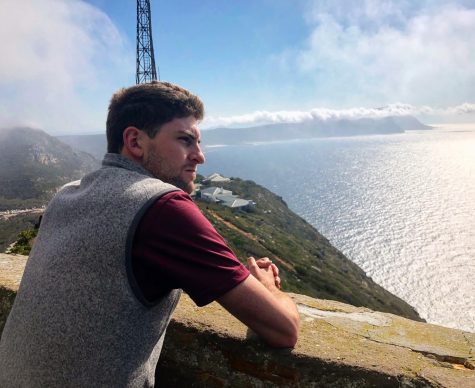
As a sophomore majoring in CLEG and Journalism, I was drawn to journalism because of the fact that you can make a difference with the stroke of a pen....



